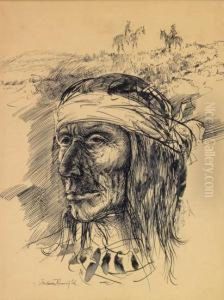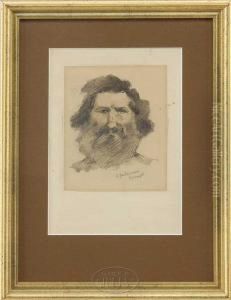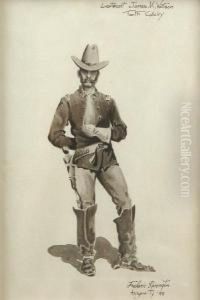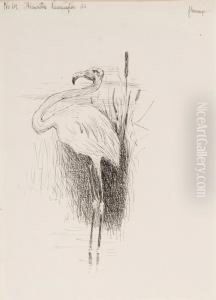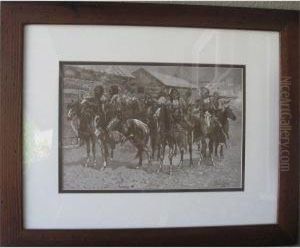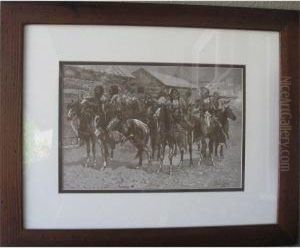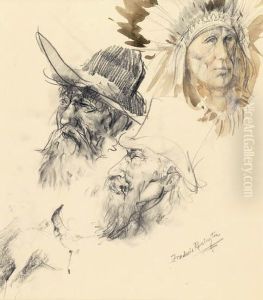Frederick Remmington Paintings
Frederic Remington was an American painter, illustrator, sculptor, and writer who specialized in depictions of the American Old West, specifically concentrating on the last quarter of the 19th century American frontier. Born on October 4, 1861, in Canton, New York, Remington was the son of a Civil War officer. His upbringing in a region close to the Canadian border exposed him to tales of the frontier and adventure from a young age, which would heavily influence his later work. He attended Yale University's School of Fine Arts, but his academic career was cut short by his father's death, which forced him to leave school and eventually work as a reporter and illustrator.
Remington's art career began with his illustrations for popular magazines of the time, such as Harper's Weekly and Scribner's Magazine. His vivid depictions of the West captivated the imagination of the American public, who were fascinated with the rapidly disappearing frontier. Remington traveled extensively in the West, gathering material for his works. He was meticulous in his attention to detail, striving for authenticity in the portrayal of the landscapes, people, and especially the horses, which he became famous for depicting with remarkable vitality and accuracy.
His work encompassed a wide range of subjects, including the U.S. Cavalry, Native Americans, cowboys, and settlers, all portrayed with a dramatic flair that emphasized the harshness and beauty of the western landscape. Remington's style evolved over time, becoming more impressionistic and less focused on minute detail as he sought to capture the essence and emotion of the West rather than just its physical appearance.
In addition to his visual art, Remington wrote about the West. His writings, though not as acclaimed as his visual art, contributed to the myth of the Wild West that still persists in American culture. Remington's impact on the perception of the American West was profound. Through his art, he shaped the image of the West for generations of Americans and international audiences, making it an enduring symbol of American identity and pioneering spirit.
Frederic Remington died on December 26, 1909, in Ridgefield, Connecticut, from complications following an appendectomy. His legacy lives on through his extensive body of work, which continues to be celebrated in museums and collections worldwide. Remington is remembered as one of the most influential American artists of his time, whose work continues to define the visual imagery of the American West.
